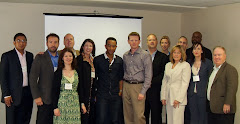
Wyndham Exec Shares Insights
Into Predictive Analytics Payoffs
You would be hard pressed to find a company today that is not employing analytics to measure the performance of some aspect of its business. However, most of the intelligence being collected is focused on historic data rather than providing insights into what the business needs to do in the future.
Sri Raghavan, the speaker at the recent CMO Club Dinner in Boston, advised CMOs that predictive analytics can have a bigger impact on the bottom line by helping to shape the future. “Most analytics applications are currently providing a rear view mirror,” Raghavan said. “With predictive analytics companies can learn more about what they need to solve your biggest business problems.”
Raghavan is the Senior VP of Revenue Management and Analytics for RCI, a division of Wyndham Worldwide and the world’s largest vacation exchange network, and a former senior executive with i2 Technologies. He has achieved impressive results at RCI by working closely with the different areas of the business to identify their key pain points and developing custom analytics solutions that provide forward-looking intelligence.
For example, Raghavan’s statisticians teamed with the marketing department on a forecasting and consumer behavior modeling analytics program last year. Considering the fact that RCI invests approximately 30% of its revenues on marketing directly to its more than 4 million members, campaign effectiveness is a critical metric for the company.
“Companies should really view analytics tools as a huge calculator. For them to be really impactful, they have to integrate well into your current business processes. An analytics tool won’t do any good if the people in the business aren’t using it.” -- Sri Raghavan, Predictive Analytics
In addition, because the marketing department had been sending multiple contacts to members within a short time period, the company was quickly exhausting its file.
By aligning a centralized analytics team with the marketing department, RCI was able to identify that the top 50% of its customers were accounting for 97% of all transactions. Segmenting these top customers and sending them targeted messaging helped improve campaign response rates between 5% and 26%. Even more impressive, RCI has seen a 3.4% lift in transactions within this target segment in 2007.
Knowing What You Need
Beyond marketing segmentation, Raghavan said RCI is also utilizing predictive analytics for forward-looking intelligence within product development, operations and its call centers. Ultimately, he said the real power of predictive analytics is about asking the right questions and focusing on the biggest business problems. “Our real competitive advantage is identifying insights that are non-intuitive and actionable."
In addition to the fact that most companies are using analytics to look backwards, Raghavan said another major obstacle that has limited the impact of packaged analytics applications is a “one size fit all” approach.
“Companies should really view analytics tools as a huge calculator. For them to be really impactful, they have to integrate well into your current business processes. An analytics tool won’t do any good if the people in the business aren’t using it,” Raghavan said.
“Too many applications require the lines of business to dramatically change their processes, and they ultimately don’t utilize them properly. The output can be as simple as an Excel spreadsheet. Each department will likely will their own look and feel. If you are giving the business a tool they will use and see results, the processes can ultimately be changed over time.”
He added the developing a predictive analytics solution doesn’t have to be cost-prohibitive, estimating that most businesses can see real results with an investment under $100,000. In order to find the answers to the hard questions businesses are facing, Raghavan advised CMOs to experiment frequently with different models, adding that“predictive analytics comes in bite sized chunks.”







No comments:
Post a Comment